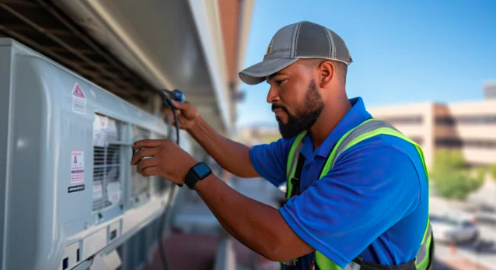Life Insurance Greenville SC is a crucial financial tool that provides a safety net for individuals and their families, offering protection against unforeseen events and ensuring financial stability for loved ones in the event of the policyholder’s death. In this comprehensive guide, we will explore the various aspects of life insurance, including its importance, types, benefits, considerations, and how to make informed decisions when selecting the right policy.
Understanding Life Insurance:

Life insurance is a contract between an individual and an insurance company. The individual, known as the policyholder, pays premiums to the insurance company in exchange for coverage. In the event of the policyholder’s death, the insurance company pays out a lump sum, known as the death benefit, to the beneficiaries designated by the policyholder. This financial protection helps ensure that loved ones are taken care of financially and can cover various expenses, including funeral costs, outstanding debts, mortgage payments, and ongoing living expenses.
Types of Life Insurance:
There are several types of life insurance policies available, each with its own features and benefits:
- Term Life Insurance: Term life insurance provides coverage for a specific period, typically ranging from 5 to 30 years. If the policyholder passes away during the term of the policy, the insurance company pays out the death benefit to the beneficiaries. Term life insurance is often more affordable and straightforward compared to other types of policies, making it a popular choice for many individuals and families.
- Whole Life Insurance: Whole life insurance offers lifelong coverage, as long as the premiums are paid. In addition to providing a death benefit, whole life insurance also includes a cash value component that accumulates over time. Policyholders can access the cash value through withdrawals or loans, providing financial flexibility and stability.
- Universal Life Insurance: Universal life insurance is a flexible policy that allows policyholders to adjust their premiums and death benefits over time. Like whole life insurance, universal life insurance includes a cash value component that grows over time. Policyholders can use the cash value to supplement retirement income or cover unexpected expenses.
Benefits of Life Insurance:
Life insurance offers several benefits that make it an essential component of financial planning:
- Financial Security: Life insurance provides financial security to loved ones, ensuring that they are taken care of financially in the event of the policyholder’s death. The death benefit can help cover immediate expenses and ongoing financial obligations, such as mortgage payments and living expenses.
- Income Replacement: For individuals who are the primary breadwinners in their families, life insurance can help replace lost income, ensuring that their loved ones can maintain their standard of living after their passing.
- Estate Planning: Life insurance can play a crucial role in estate planning by providing liquidity to cover estate taxes and other expenses. This can help ensure a smooth transfer of assets to heirs and minimize financial burdens on the estate.
Considerations When Choosing Life Insurance:
When selecting a life insurance policy, several factors should be considered:
- Coverage Amount: Determine how much coverage is needed based on financial obligations, income replacement needs, and long-term goals.
- Premiums: Consider the affordability of premiums and how they fit into the budget. Compare quotes from multiple insurance companies to find the best rates.
- Policy Features: Review the features and benefits of different types of policies to choose one that aligns with needs and preferences.
- Financial Strength of Insurer: Research the financial strength and stability of the insurance company to ensure they can fulfill their obligations in the future.
Life insurance is an essential component of financial planning that provides protection and peace of mind for individuals and their families. By understanding the different types of policies available and the benefits they offer, individuals can make informed decisions to safeguard their loved ones’ financial future. Life insurance offers financial security, income replacement, and estate planning benefits, ensuring that loved ones are taken care of and assets are transferred smoothly. With the right life insurance coverage, individuals can face the future with confidence and peace of mind, knowing that their loved ones will be protected.
Life insurance stands as a cornerstone of financial planning, offering a safety net for individuals and their families in the face of life’s uncertainties. It provides financial protection and peace of mind by ensuring that loved ones are taken care of financially after the policyholder’s death. In this article, we will explore the significance of life insurance, its various types, benefits, considerations, and why it’s a vital component of a comprehensive financial plan.
The Significance of Life Insurance:
Life insurance plays a crucial role in providing financial security to loved ones and dependents. In the event of the policyholder’s passing, life insurance offers a lump sum payment, known as the death benefit, to the beneficiaries. This financial protection can help cover immediate expenses such as funeral costs, outstanding debts, mortgage payments, and ongoing living expenses. It ensures that loved ones are not left financially vulnerable during a difficult time and can maintain their quality of life.
Types of Life Insurance:
There are several types of life insurance policies available, each tailored to meet different financial needs and objectives:
- Term Life Insurance: Term life insurance provides coverage for a specified period, typically ranging from 5 to 30 years. If the policyholder passes away during the term of the policy, the insurance company pays out the death benefit to the beneficiaries. Term life insurance is often more affordable and straightforward compared to other types of policies, making it an attractive option for individuals seeking temporary coverage.
- Whole Life Insurance: Whole life insurance offers lifelong coverage, as long as the premiums are paid. In addition to providing a death benefit, whole life insurance includes a cash value component that accumulates over time. Policyholders can access the cash value through withdrawals or loans, providing financial flexibility and stability.
- Universal Life Insurance: Universal life insurance is a flexible policy that allows policyholders to adjust their premiums and death benefits over time. Like whole life insurance, universal life insurance includes a cash value component that grows over time. Policyholders can use the cash value to supplement retirement income or cover unexpected expenses.
Benefits of Life Insurance:
Life insurance offers several benefits that make it an essential component of financial planning:
- Financial Security: Life insurance provides financial security to loved ones, ensuring that they are taken care of financially in the event of the policyholder’s death. The death benefit can help cover immediate expenses and ongoing financial obligations, such as mortgage payments and living expenses.
- Income Replacement: For individuals who are the primary breadwinners in their families, life insurance can help replace lost income, ensuring that their loved ones can maintain their standard of living after their passing.
- Estate Planning: Life insurance can play a crucial role in estate planning by providing liquidity to cover estate taxes and other expenses. This can help ensure a smooth transfer of assets to heirs and minimize financial burdens on the estate.
Considerations When Choosing Life Insurance:
When selecting a life insurance policy, there are several factors to consider:
- Coverage Amount: Determine how much coverage is needed based on financial obligations, income replacement needs, and long-term goals.
- Premiums: Consider the affordability of premiums and how they fit into the budget. Compare quotes from multiple insurance companies to find the best rates.
- Policy Features: Review the features and benefits of different types of policies to choose one that aligns with needs and preferences.
- Financial Strength of Insurer: Research the financial strength and stability of the insurance company to ensure they can fulfill their obligations in the future.
Conclusion:
Life insurance is a vital tool for protecting loved ones and securing financial future. Whether young professional, growing family, or retiree, life insurance should be integral part of financial plan. By understanding importance of life insurance, exploring different types of policies, weighing benefits and considerations, and following tips for selecting right policy, can make informed decisions to safeguard family’s financial well-being. With the right life insurance coverage, individuals can face the future with confidence and peace of mind, knowing that their loved ones will be protected.



 Heating, ventilation, and air conditioning (HVAC) systems manipulate environmental temperature to improve indoor comfort and air quality. They involve products like furnaces, air conditioners, and ductwork. Contact
Heating, ventilation, and air conditioning (HVAC) systems manipulate environmental temperature to improve indoor comfort and air quality. They involve products like furnaces, air conditioners, and ductwork. Contact 